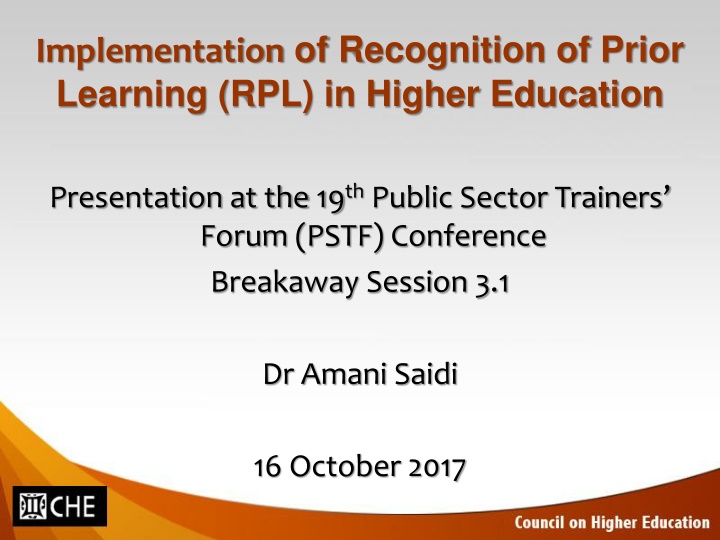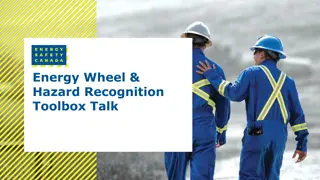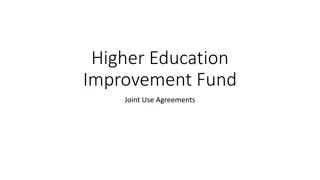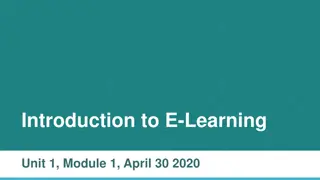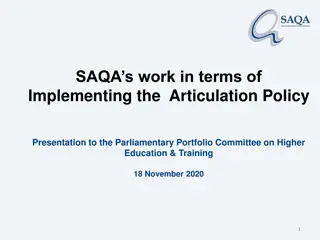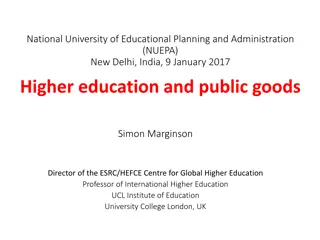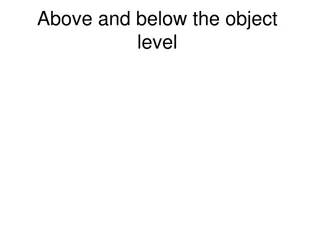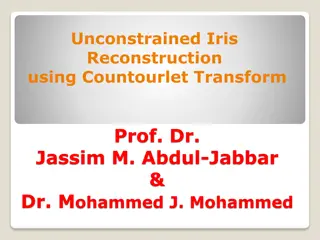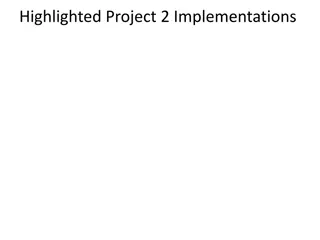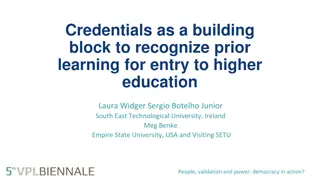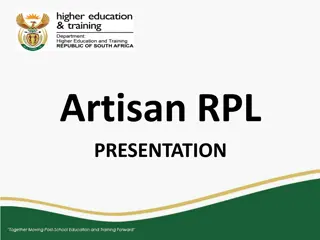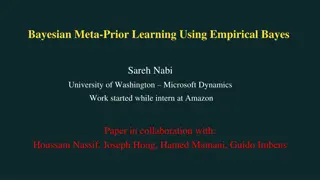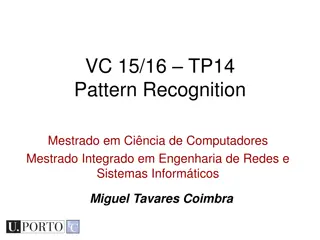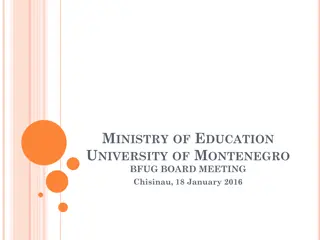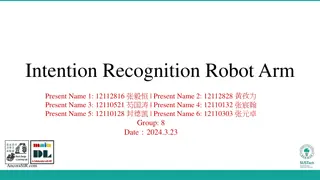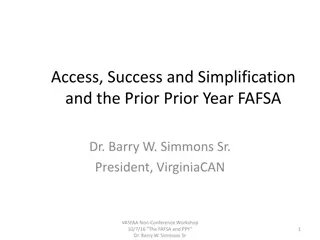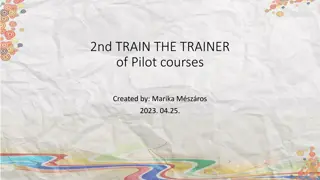Overview of Recognition of Prior Learning (RPL) in Higher Education
This presentation at the 19th Public Sector Trainers Forum (PSTF) Conference delves into the concept of Recognition of Prior Learning (RPL) in higher education. It explores the principles, key concepts, purposes, and legislative context of RPL, highlighting its importance in facilitating access, mobility, progression, and redressing past discrimination. RPL serves as a mechanism for recognizing and evaluating individuals' prior knowledge and skills for alternative access, admission, certification, and further learning opportunities.
Download Presentation

Please find below an Image/Link to download the presentation.
The content on the website is provided AS IS for your information and personal use only. It may not be sold, licensed, or shared on other websites without obtaining consent from the author.If you encounter any issues during the download, it is possible that the publisher has removed the file from their server.
You are allowed to download the files provided on this website for personal or commercial use, subject to the condition that they are used lawfully. All files are the property of their respective owners.
The content on the website is provided AS IS for your information and personal use only. It may not be sold, licensed, or shared on other websites without obtaining consent from the author.
E N D
Presentation Transcript
Implementation of Recognition of Prior Learning (RPL) in Higher Education Presentation at the 19thPublic Sector Trainers Forum (PSTF) Conference Breakaway Session 3.1 Dr Amani Saidi 16 October 2017
What is RPL? The principles & processes through which prior knowledge & skills of a person are made visible, mediated & assessed for the purpose of alternative access & admission, recognition & certification, or further learning & development (NQFpedia: SAQA, 2014)
Key Concepts in the Definition of RPL Principles: there are a set of principles that underpin & guide RPL Process: RPL comprises a series of actions or steps Prior knowledge & skills: knowledge & skills acquired through learning that does not lead to a formal qualification Made visible: presented, displayed or demonstrated Mediated: explained, translated and/or interpreted Assessed: evaluated against learning outcomes of specified levels of a specific qualification
Purposes of RPL Alternative access & admission to higher education learning programmes for those who do not have formal prerequisites Recognition of knowledge & skills acquired through learning that does not lead to a formal qualification Certification as having fulfilled the equivalence of the requirements for a particular formal qualification Further learning & development: promotion of lifelong learning on the understanding that any knowledge & skill acquired will be recognised
Legislative Context RPL is a key mechanism for realising two key objectives of the National Qualifications Framework (NQF) as stipulated in the NQF Act 67 of 2008: a) Facilitate access to, & mobility & progression within education, training & career paths b) Accelerate the redress of past unfair discrimination in education, training & employment opportunities The two objectives highlight the two key high level goals of RPL: access & success
Section 26D(2)(c) & (d) of the Skills Development Act 97 of 1997 similarly recognise RPL as route towards access to a trade test Section 13(1)(h)(iii) of the NQF Act mandates SAQA to develop policy & criteria for RPL Section 27(h)(ii) mandates the CHE, as the Quality Council for higher education, to develop & implement policy & criteria for RPL in higher education, taking into account the RPL policy & criteria developed by SAQA
RPL Policy Environment SAQA published the first RPL policy in 2002, based on the provisions of the SAQA Act 58 of 1995 Following the repeal of the SAQA Act by the NQF Act 27 of 2008, SAQA published the National Policy for the Implementation of RPL in 2013 The WP for PSET, also published in 2013, identifies RPL as key to redressing past injustices & recognising competence gained through practical workplace learning & experience
The WP for PSET lamented the lack of common understanding of , & approach to RPL across the PSET In 2016, the DHET published the RPL Coordination Policy to provide a strong enabling policy environment for the further development & implementation of RPL across the PSET. It sought to speed up implementation of RPL by: a) Establishing a national coordination mechanism b) Establishing funding mechanism c) Specifying roles & responsibilities of various NQF bodies & education institutions
Responsibilities of the CHE Both SAQA s National RPL Implementation Policy, and DHET s RPL Coordination Policy assign important roles & responsibilities to the CHE as the QC for higher education These include: a) Develop an RPL policy for the higher education sector, taking into account the national policies b) Promote & monitor the implementation of RPL within the higher education sector c) Report on the progress being made in the implementation of RPL
Development of the RPL Policy for HE Process started in 2014 & ended with publication of the policy in 2016 - Long & winded process - Extensively consultative - Process was overseen by a reference group - Approved by the HEQC & the CHE Council Workshops for public universities & the private HEIs were held to ensure that there is common understanding of the principles & processes
Key Principles of the Policy Opening up of access to higher education Redress of the past injustices RPL as a specialised pedagogical process, & not just a simple assessment process Developmental & incremental approach to the implementation of RPL Appreciation of the different contexts for implementing RPL Acknowledgement of the dynamic nature of knowledge & skills
Key Process Directives of the Policy Institutions to develop their own processes & procedures within the framework set by the CHE policy Institutions to train staff to conduct RPL assessments RPL assessment should be undertaken by the academic staff in each discipline/subject Use credible assessment tools Institutions to ensure that there are adequate administrative & technical support systems for fair, credible, reliable & transparent RPL processes
Institutions to make provisions for conducting RPL assessments in languages that the candidates are most proficient in Institutions to ensure that there is internal quality assurance mechanism for RPL Institutions to ensure that the CHE is involved to provide external quality assurance where more than 10% of a cohort of students are admitted through RPL
Promotion of RPL in HE The various QA functions of the CHE require institutions to indicate in the Self-Evaluation Reports (SER) the progress they are making in terms of implementation of RPL The CHE analyses this information to get a picture of RPL implementation We similarly collect information through our support desk, which is also analysed to establish the state of play regarding RPL implementation
Emerging Trends & Patterns Majority of institutions implement RPL but to varying extents Private HEIs have shown more interest in implementing RPL than public universities In private HEIs RPL is more for undergraduate programmes, while in public universities it is more for postgraduate programmes Within institutions, RPL is more prevalent in generic programmes than in specialised professional programmes
There is general resistance to RPL by academics who have been in the system for long: they see it as diluting quality Most institutions do not have adequate administrative & technical support systems for RPL: therefore can only process few RPL applications at a particular time Some institutions, especially the private HEIs, charge prohibitive amounts of admin fees for RPL: another barrier
Conclusion There is now more awareness of RPL in the higher education sector Implementation is taking place, but not at a scale that we would have all wished at this stage Challenges: a) Resistance by senior academics, particularly in public universities b) Not many academics have competence for RPL c) Cost constraints: exorbitant fees to cover costs have become another barrier
